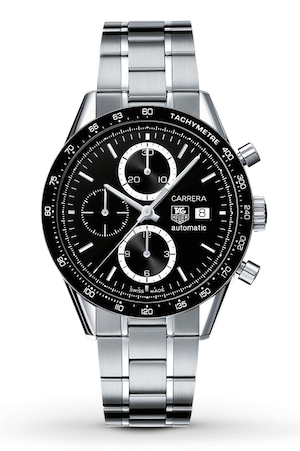- Posts
- 378
- Likes
- 223
calibre11user
·I've been wondering why Tag Heuer puts the name of the movement on the watch dial? The movement names are plainly visible: Calibre 16, Calibre 5, Calibre 1887, Heuer 01, etc. The movement name occurs on every watch line from Carrera to Link.
I have not seen this approach with other watch brands. For example, although Omega shows "Co-axial Chronometer" on the dial, it doesn't mention the specific movement (such as the 9300 movement). The same goes for Rolex, Panerai, Breitling, etc. In particular, IWC, like Tag Heuer, produces watches with both in-house and ETA movements, but IWC doesn't put that information on the dial. The only company that does mention the movement seems to be Zenith with their El Primero, but one can make the argument that the El Primero has as much significance as the Zenith brand.
Finally, I especially find it odd that in the latest (2015) refresh of Carrera watches with the Calibre 16, the "Calibre 16" literally gets top billing over "Carrera". That seems backwards to me.

I have not seen this approach with other watch brands. For example, although Omega shows "Co-axial Chronometer" on the dial, it doesn't mention the specific movement (such as the 9300 movement). The same goes for Rolex, Panerai, Breitling, etc. In particular, IWC, like Tag Heuer, produces watches with both in-house and ETA movements, but IWC doesn't put that information on the dial. The only company that does mention the movement seems to be Zenith with their El Primero, but one can make the argument that the El Primero has as much significance as the Zenith brand.
Finally, I especially find it odd that in the latest (2015) refresh of Carrera watches with the Calibre 16, the "Calibre 16" literally gets top billing over "Carrera". That seems backwards to me.

